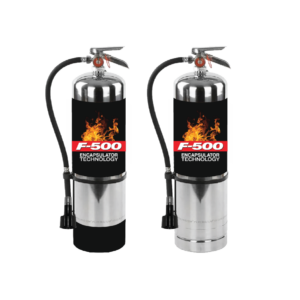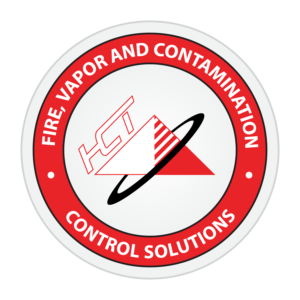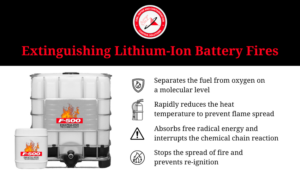Lithium-ion batteries are preparing us for an electric mobility-focused future, providing a compact power source for personal electronics, various modes of transportation, industrial equipment, and more. As smartphones, laptops, hybrids, and electric vehicles remain essential to our modern lifestyle, these batteries bring a significant risk to our lives: lithium-ion battery fires. Understanding how to extinguish a lithium-ion battery fire is critical to a society that depends on technology.
The complexity of a lithium-ion battery fire lies in its composition of Class A, B, and C materials. In addition to more common combustible materials, such as plastics, lithium-ion batteries contain a flammable liquid medium, electrolyte, and electrical components. These mixed materials pose unique fire hazards that require a specialized approach, differing from the techniques used for conventional fire suppression.
This blog post will explore the causes of lithium-ion battery fires, outline the action items for extinguishing these fires, and highlight Hazard Control Technologies’ advanced solutions for effectively managing these fire emergencies. We will provide essential knowledge and understanding for safely responding to a lithium-ion battery fire, emphasizing the need for more versatile fire suppression agents like those at HCT.
Class A, B, and C Fire Hazards
We’ve learned that li-ion battery fires involve Class A, B, and C fire classes. This triple threat presents unique challenges for fire suppression because each fire class typically requires a different extinguishing approach.
- Class A: Ordinary combustibles like paper or wood
- Class B: Flammable liquids like alcohol, oil, and gas
- Class C: Electrical equipment, appliances, and wiring
For example, plain water might be an effective Class A fire extinguisher but it’s ineffective against Class B fires and hazardous in the presence of Class C fires. Similarly, a traditional Class B foam fire extinguisher might successfully smother a flat flammable liquid fire but would be inappropriate in the presence of a three-dimensional lithium-ion battery fire involving multiple fire classes. Understanding the nature of these fires is the first step in preparing to extinguish them, and it equips us with the necessary knowledge to apply the most effective extinguishing methods.
Understanding Lithium-Ion Battery Fires In-Depth
Although these batteries are efficient tools, they can become unstable under certain conditions. Lithium-ion battery fires occur as a result of thermal runaway. Thermal runaway takes place when lithium-ion battery cells become overheated. The overheating of the battery pack stems from various causes, such as an electrical short circuit, rapid charging, discharging cycles, or even manufacturing defects. This prompts a chain reaction as overheated li-ion cells release flammable, explosive, and toxic off-gases, causing adjacent cells to overheat. This cycle of cell-to-cell ignition creates the perfect environment for a fire or explosion without proper intervention.
Protecting Civilians and First Responders
The first step following any lithium-ion battery fire is to evacuate the immediate area. The next step is to alert the local fire department. Lithium-ion battery fires can be unpredictable and escalate rapidly. Prioritizing safety is essential during a lithium-ion battery fire as they release flammable materials and toxic vapors that can lead to an explosion. This could involve projectiles burning upwards of 1,000°F (538°C) that threaten the welfare of both civilians and first responders if left to burn.
Whether you’re in a residential, office, or industrial setting, allowing a lithium-ion battery fire to spread can have devastating consequences. Ensuring that swift action is taken and the appropriate equipment is made available can halt fire spread, drastically minimizing damage and loss.
Professionals recommend using a specialized extinguishing agent like the F-500 Encapsulator Agent for putting out lithium-ion battery fires. F-500 EA can be premixed and proportioned at a 3% solution for thorough lithium-ion battery fire mitigation.
Three Levels of Lithium-Ion Battery Fire Protection
F-500 EA addresses lithium-ion battery fires across three distinct levels: flammability, explosivity, and toxicity. The F-500 EA rapidly cools the fire, interrupting the chemical reaction. It also encapsulates the flammable liquid electrolytes, reducing the fire’s ability to spread and minimizing the release of carcinogens.
Flammability
F-500 EA encapsulates flammable corrosive electrolytes and absorbs thermal energy up to 10x faster than plain water to successfully halt thermal runaway propagation.
Explosivity
F-500 EA ceases the production of explosive off-gases, such as hydrogen, methane, and ethylene to prevent an explosion from occurring.
Toxicity
F-500 EA reduces the concentration of toxic off-gases, including hydrogen fluoride, carbon monoxide, and carbon dioxide to protect human life.
Practical Actions to Extinguish a Lithium-Ion Battery Fire
In the case of a lithium-ion battery fire, immediate and correct action is vital to effectively manage the situation. Given the unique nature of these fires, the approach to extinguishing them is much different from standard firefighting methods. Our line of F-500 EA-powered equipment and systems is backed by over 15 years of testing, recognition, and utilization across multiple continents.
Small-Scale Fires
HCT’s multi-class fire extinguishers powered by F-500 EA are effective for smaller lithium-ion battery fires involving personal electronics such as mobile phones, laptops, e-bikes, drones, appliances, and more.
Large-Scale Fires
HCT’s Diamond Doser water-driven proportioner delivers F-500 EA concentrate to your sprinkler system’s water stream for larger lithium-ion battery fires, providing unprecedented industrial fire protection.
Safety Tips and Considerations
It’s important to remember that traditional fire extinguishers are ineffective against lithium-ion battery fires. Unlike lithium batteries, lithium-ion batteries do not contain metallic lithium. Instead, manufacturers utilize an array of materials. This can include lithium cobalt oxide and graphite, a combination often seen in devices such as cell phones and laptops. Similarly, lithium manganese oxide and lithium iron phosphate are heavily used in the production of hybrid and electric car batteries.
Water mist has proven to be effective for containing a lithium-ion battery fire, but a copious amount of water and time is required. Additionally, lithium-ion batteries extinguished with plain water have a documented history of re-ignition. This is commonly seen following roadside incidents involving hybrid and electric vehicle fires. Lastly, plain water does not mitigate flammable gases and explosive vapors emitted by burning lithium-ion batteries, jeopardizing the safety of civilians and first responders.
When time is of the essence, the specialized nature of NFPA and NEN-recognized F-500 Encapsulator Agent makes it a more appropriate choice for lithium-ion battery fire suppression. During any fire emergency, it’s crucial to maintain a safe distance from the flames. Knowing how to respond to a lithium-ion battery fire involves using the correct extinguishing agent, like F-500 EA, and understanding when to let trained firefighting professionals manage the situation.
Hazard Control Technologies Expertise in Fire Suppression
Hazard Control Technologies offers a specialized and highly effective solution with the F-500 Encapsulator Agent. Our expertise in addressing the specific needs of fire suppression sets us apart in the fire safety industry. Our F-500 Encapsulator Agent isn’t just another fire extinguisher. It’s a product of years of extensive research and development tailored for extinguishing lithium-ion battery fires. This agent is a valuable tool in various industries, including Aviation, Automotive, Warehousing, and more.
Remember that understanding the risks associated with lithium-ion battery fires and knowing how to respond to them is only part of the solution. It’s essential to equip yourself with the right tools and equipment for mitigating one of these fires. We invite you to explore the innovative solutions HCT offers and consider how our expertise in fire suppression can enhance your preparedness for lithium-ion battery fire scenarios.
Enhance Your Fire Safety With HCT
If you want to learn more about HCT’s solutions and how the F-500 Encapsulator Agent can be integrated into your fire safety plan, visit our website and contact Hazard Control Technologies today! Empower yourself with the necessary knowledge and tools to extinguish lithium-ion battery fires and ensure a safer environment.
Resources:
- “Classes of Fires.” UCLA Health. https://www.uclahealth.org/safety/ambulatory-safety/ambulatory-fire-and-life-safety-program/classes-fires-fire-extinguishers
- Hazard Control Technologies. https://hct-world.com/
- “Lithium Ion Battery.” ScienceDirect. https://www.sciencedirect.com/topics/chemistry/lithium-ion-battery





